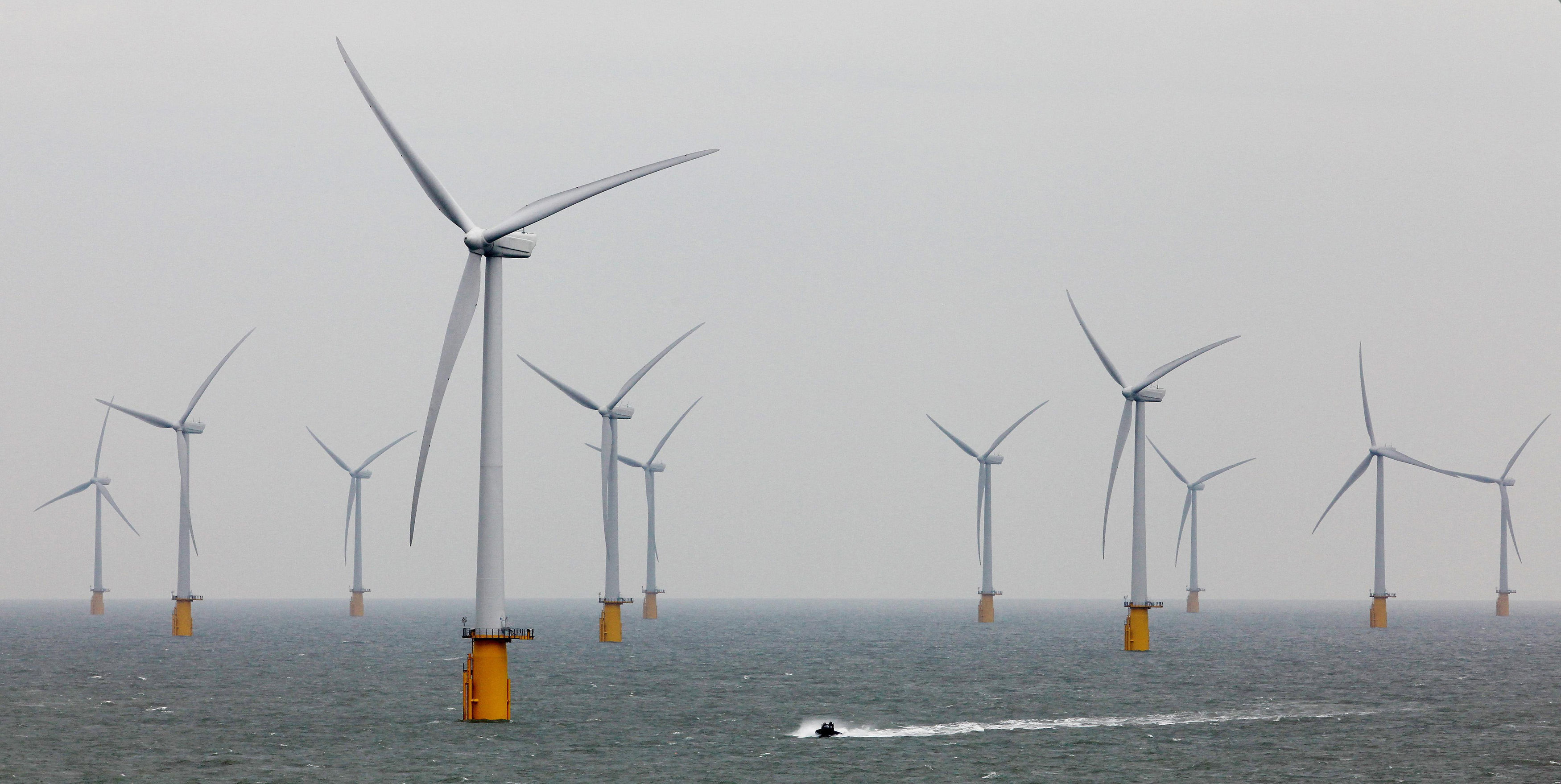
WIND FARMS have the potential to provide more energy on the coldest days of winter than previously thought, a study suggests.
As more renewables come on line, concerns have been raised about how intermittent wind can help meet demand on cold, still winter days, when more electricity is needed.
Warmer periods in winter are often windier and colder periods are calmer due to prevailing weather patterns, leading to a reduction in wind power when demand is high, researchers said.
But on the very coldest days with highest demand, average wind power increases again, according to the study involving scientists from the Met Office Hadley Centre, Imperial College London and the University of Reading.
The study compared electricity demand over 34 years with power from an imagined uniform distribution of onshore and offshore turbines across Britain and areas where sites are planned, such as the North Sea, rather than looking at existing wind farms.
It found that on average, winter wind power supplies fall by a third between days with low demand and high demand.
But during days with the highest demand, average wind power increases again, due to strengthening easterly winds.
In days with the highest 5% of energy demand, a third produce more wind power than the winter average.
Hazel Thornton of the Met Office Hadley Centre said: “During winter in the UK, warmer periods are often windier, while colder periods are more calm, due to the prevailing weather patterns.
“Consequently we find that in winter as temperatures fall, and electricity demand increases, average wind energy supply reduces.
“However, contrary to what is often believed, when it comes to the very coldest days, with highest electricity demand, wind energy supply starts to recover”.
She added: “The very coldest days are associated with a mix of different weather patterns, some of which produce high winds in parts of the UK.”
High pressure over Scandinavia and lower pressure over Southern Europe blows cold continental air in from the east leading to high energy demand but also high wind power.
But winds blowing from the north, as happened in the very cold winter of December 2010 cause high demand but lower wind power supply.
The study found a spread of turbines across Great Britain would make the most of varied wind patterns associated with the coldest days.
Offshore wind also provides more secure supplies during high demand as it is sustained at higher levels than onshore wind.
Professor Sir Brian Hoskins, of the University of Reading and chairman of Imperial College London’s Grantham Institute, said: “A wind power system distributed around the UK is not as sensitive to still cold winter days as often imagined.
“The average drop in generation is only a third and it even picks up for the days with the very highest electricity demand.”
But the study also revealed that when the UK’s own demand is high and wind power low, neighbouring countries may be experiencing the same conditions and would struggle to provide additional capacity to Britain.

Enjoy the convenience of having The Sunday Post delivered as a digital ePaper straight to your smartphone, tablet or computer.
Subscribe for only £5.49 a month and enjoy all the benefits of the printed paper as a digital replica.
Subscribe